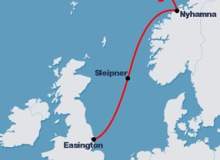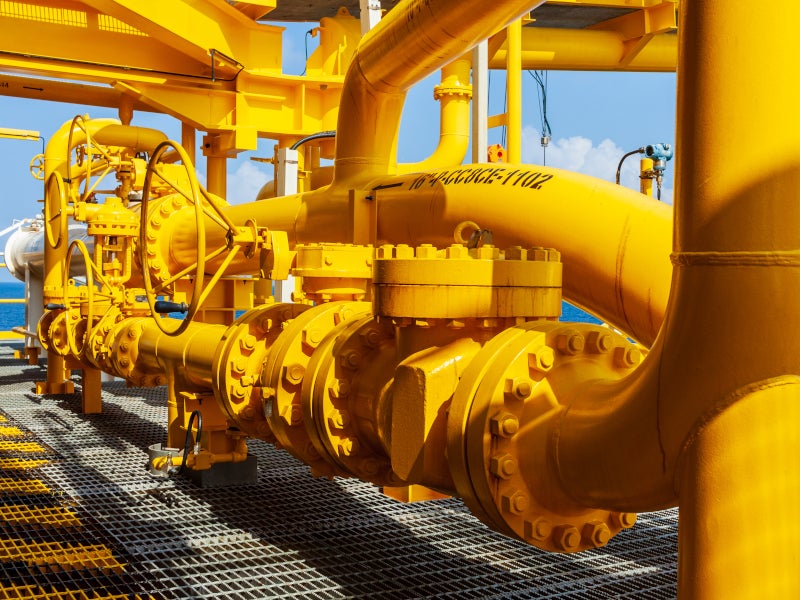
Transferring oil and gas from fields located offshore is becoming increasingly more difficult as the industry searches for new resources in ultra deep waters, further and further from the land.
New fields are often situated hundreds of miles from shore, in waters deeper than 2,000m, which means pipelines made of thicker and heavier steel are required to cope with higher water pressures, driving up costs of installation and logistics.
The CEO of Petrobras found transferring gas from the pre-salt fields of Brazil so challenging that he confided in risk management company DNV, and a new solution to reduce the wall thickness of pipelines was born.
DNV global pipeline director Asle Venås talks to Sarah Blackman about how the ‘X-Stream pipeline concept’ works and how it could alter oil and gas distribution processes in the future.
Sarah Blackman: How does the X-stream concept work to allow pipeline thickness to be reduced?
Asle Venås: The concept is based on a combination of already established technology, an inverted high integrity pressure protection system (i-HIPPS) and the development of inverted double block and bleed valves (i-DBB).
See Also:
By utilising i-HIPPS and i-DBB, the X-Stream system immediately isolates the deep-water pipe if the internal pressure starts to fall. In this way, the internal pipeline pressure can be maintained above a critical level for any length of time.
How well do you really know your competitors?
Access the most comprehensive Company Profiles on the market, powered by GlobalData. Save hours of research. Gain competitive edge.

Thank you!
Your download email will arrive shortly
Not ready to buy yet? Download a free sample
We are confident about the unique quality of our Company Profiles. However, we want you to make the most beneficial decision for your business, so we offer a free sample that you can download by submitting the below form
By GlobalDataThe primary i-HIPPS system will activate on a low pressure signal from the pipeline. This will maintain the minimum internal pressure in the pipeline at all times, as long as the pipeline is free from leaks or ruptures above the collapse critical area.
SB: What happens if there is a leak?
AV: If the pressure continues to fall due to an internal leakage in the main i-HIPPS valves, and the pressure is getting close to the critical collapse level, the i-DBB system is activated.
The pipeline is isolated by a viscous substance of gel consistency which is pumped under high pressure into the space between the i-DBB valves to stop leaks from the higher pressure side. This is a central component to the X-Stream concept which ensures the integrity of the pipeline.
If disaster strikes and there is a leakage or rupture of the pipeline in shallow water, the pressure will fall and the i-HIPPS valves will close.
The secondary i-HIPPS valves are placed below the collapse critical depth. Should these subsea i-HIPPS valves have an internal leak, and the internal pressure reaches a critical level, a small bleed valve is opened to the surrounding water and the seawater will flood the void between the i-DBB valves.
Leakage or rupture below the critical collapse depth limit will not result in pipeline collapse because the high external pressure will prevent loss of internal pressure below the critical level.
SB: How significantly can the concept reduce costs of developing pipelines in the future?
AV: For a typical deepwater gas pipeline, where the water depth is about 2,500m, X-Stream could reduce the wall thickness of the pipeline by 25-30% compared to traditional pipelines.
So, by significantly reducing wall thickness, the cost of both linepipe and installation can be reduced. However, the concept can also open for the larger diameter of ultradeep pipelines and this means the saving can be even bigger.
SB: How did the idea for the Xtreme concept come about?
AV: The deep-water gas transportation market will experience massive investments and considerable growth over the coming years as operating companies go even deeper to find and recover new resources.
This will result in a number of new technical and operational challenges as we face a future where operators are forced to push the frontiers of exploration in order to meet energy demand.
The industry is delving into deeper and more remote fields and new exploration activities are also heading for ultra-deep-waters. These fields are often located several hundred kilometres from land, in water depths in excess of 2,000 metres.
Deep-water pipelines pose a number of challenges and in particular long distance gas transportation in deep water is an increasing issue due to its cost.
The safe and cost-effective transportation of oil and gas in pipelines from deep and ultra-deep water is a growing challenge worldwide and safe and new solutions are needed.
SB: What are the next steps for this project?
AV: The DNV study is a concept based on significant research, development, engineering and industry input, and a basic and detailed design will need to be carried out before the X-Stream concept is realised on a real project. DNV hope to work with the industry to refine and test the concept.
DNV is confident that, by further qualifying the X-Stream concept, huge financial savings can be made for long distance, deep-water gas pipelines without compromising pipeline safety and integrity.
SB: Why do you think other companies in the industry haven’t come up with this concept before?
AV: Well, the idea of keeping the pipeline pressurised during installation and operation has been discussed by many and has also been used for oil and water pipelines, where the internal pressure is maintained by the static head.
For gas pipelines it will be necessary to keep the pressure by other means. Why no one has come up with using HIPPS systems for this, we can not say.




